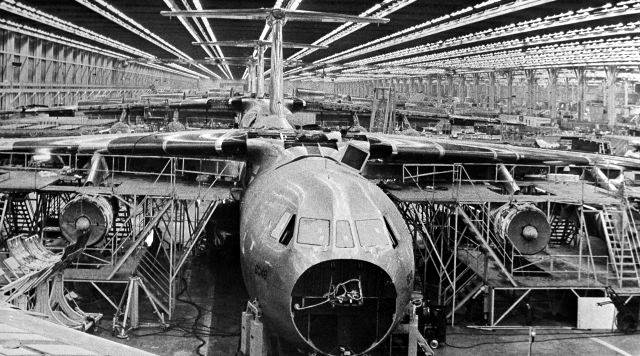This is an HTML version created from a few pages of the 1966 Lockheed Management Club Yearbook.
C-141 Program
The C-141 StarLifter was conceived and developed to move men and equipment
at the jet-age speed demanded by modern warfare.
In March, 1961, the Lockheed-Georgia design was chosen in competition as being
the best to meet the need. Pratt and Whitney was selected to build the powerful
engines required by an aircraft of such size. And so the aviation industry's
largest subcontracting program was launched.
This was to be the first airplane slated from its inception for use both as a
military airlifter and as a certificated commercial airfreighter. In order to
implement their common objectives, the Air Force, the Federal Aviation
Administration and Lockheed joined forces from the beginning in a combined
development effort never before attempted. Procurement and development of the
C-141 was the responsibility of the Aeronautical Systems Division of the Air
Force Systems Command for the ultimate user-the Military Airlift Command.
World-wide support to the StarLifter was assigned to Warner Robins Air Materiel
Area in Georgia.
Lockheed sublet sixty percent (by weight) of the aircraft to thousands of
subcontractors, vendors and suppliers over the United States and Canada.
Production began in 1962-a little ahead of schedule. Originally, the production
rate was set to peak at seven airplanes a month; but this was later increased
to nine per month to meet growing military commitments over-seas. To date, all
deliveries have been made on schedule, and Lockheed has met every major program
milestone. The 100th StarLifter was delivered to MAC only a year after the
first one went into squadron operation. In all, 284 C-141's have been ordered.
No prototype airplane was ever built. Every StarLifter which has come off the
production line has been pressed into global service-including the first eight
which were used in flight testing.
The rugged test program would have been the undoing of lesser aircraft. A
StarLifter was flown the amazing total of 2,500 hours of accelerated service
testing in just 11 months-establishing a reliability performance record never
before approached by a new airplane. Another C-141 set a world mark for aerial
delivery of heavy cargo by paradropping 70,195 pounds on one flight. The
test-proved integrity of the aircraft made it possible for the Military Airlift
Command to step up utilization to over eight hours a day in transpacific
operations.
Recently, MAC pioneered a new aero-medical evacuation route with StarLifters
flying directly from Saigon to Washington, D. C., via a modified polar route.
Flight time of about 18 hours cut one to three days from the time previously
required for such a mission.
C-141's now in production are being equipped with an All Weather Landing
System. Eventually the All Weather capability will be extended to enable pilots
to land in zero-zero conditions.
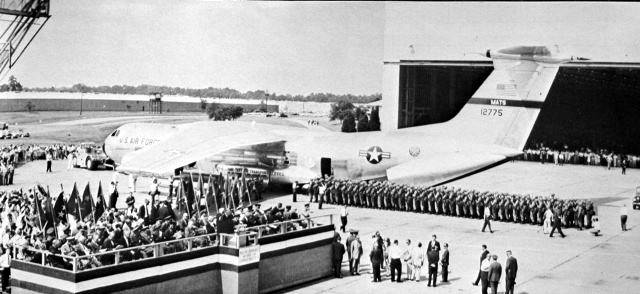
Rollout-August 22, 1963
Shortly after 10 A.M., August 22, 1963, the late President John F. Kennedy
pressed a golden key in the White House. In response to the President's signal,
the big doors of the B-l Building slowly opened and out rolled the first
gleaming C-141 StarLifter. Speaking over closed circuit television to the
assemblage of thousands at Gelac, Mr. Kennedy called the C-141 "the fastest
cargo-carrying airplane in the world."
Some 600 guests, including many distinguished U. S. military and civil aviation
leader witnessed the historic event and inspected the world's first all-cargo
jet transport.
Following rollout of the first C-141, the airplane was formally accepted by the
Military Airlift Command and returned to Lockheed for the duration of the
flight test program.
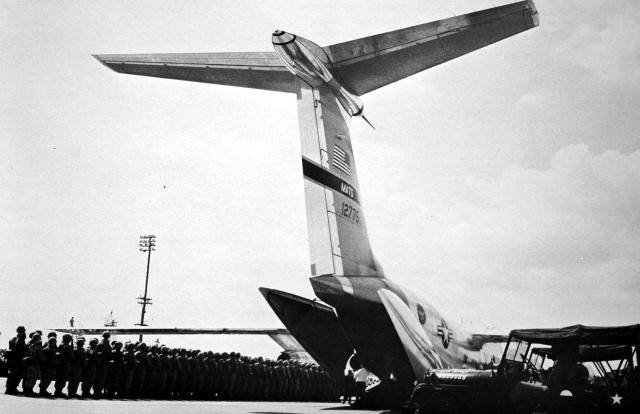
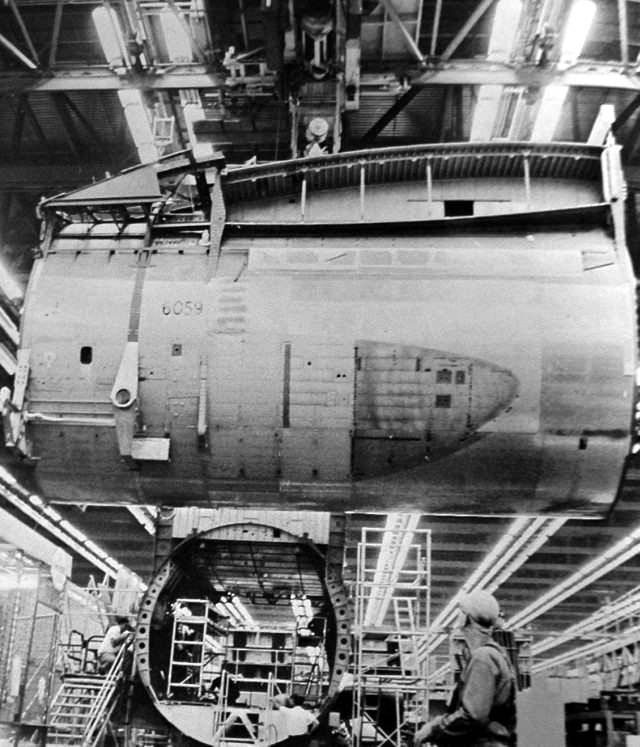
First Flight
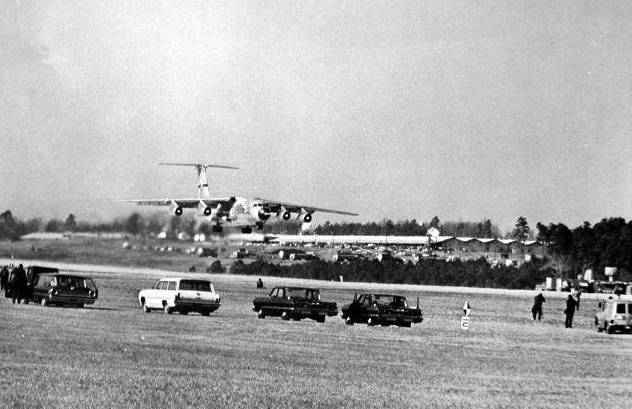
Exactly 60 years to the day from the time the Wright Brothers made the first
powered flight at Kitty Hawk, North Carolina, the Air Force's big
fanjet-powered C-141 made its first flight from Dobbins Air Force Base with
Lockheed Chief Engineering Test Pilot Leo Sullivan at the controls.
For nearly an hour the StarLifter cruised over the Georgia hills and then
floated in for a perfect touchdown utilizing the clamshell thrust reversers and
anti-skid brakes during the short landing roll. It was a "no problems" flight
from start to finish.
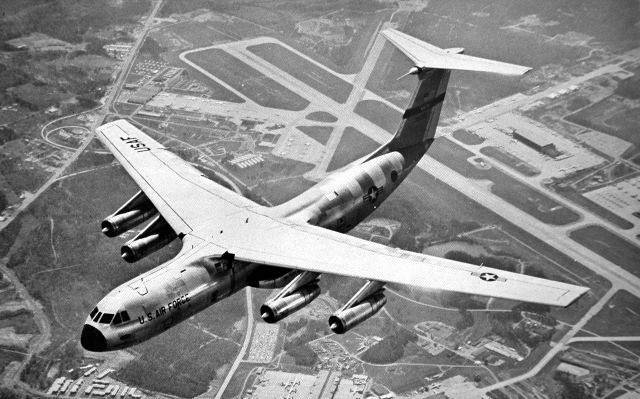
FAA Certification
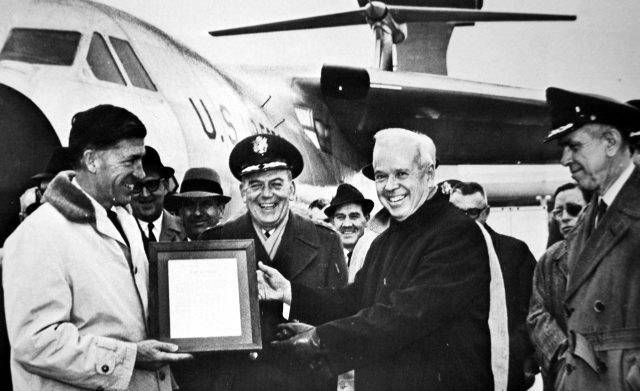
In January, 1965, Federal Aviation Administrator N. E. Halaby presented the
civil transport type certificate for the C-141 to Chuck Wagner who was at that
time Vice-President of the Lockheed-Georgia Company and C-141 Project Director.
Halaby pointed up the significance of the event by saying, "This airplane, now
a reality, has had more civil-military cooperation than any other aircraft in
history." He said the joint program gave the government "double duty for every
defense dollar it spent. We are at the portal of a new era in air
cargo."
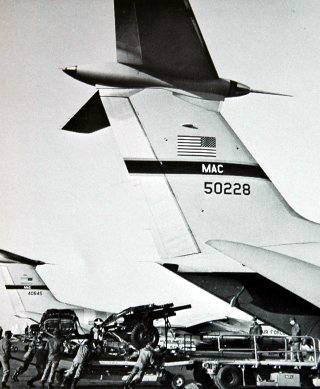
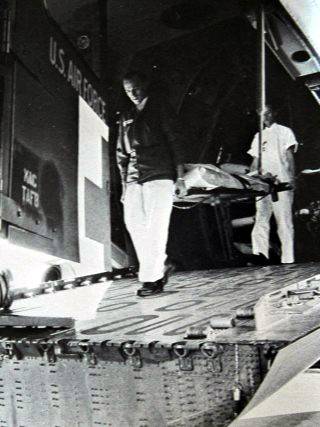
In history's most massive airlift of troops and equipment into a combat
zone, the C-141 moved an Army brigade from Hawaii to Vietnam. Operation Blue
Light saw 88 C-141 missions deploy 3,450,000 pounds of cargo and 2,160 troops
of the 3rd Infantry Brigade.
The Military Airlift Command's Red Ball Express run was inaugurated from Travis
Air Force Base, California, to Vietnam, utilizing pre-positioned crews at three
staging bases in the Pacific. Much like the Old West's Pony Express-though
infinitely faster-C-141's streak in from the U. S. with men and materials, are
serviced and refueled, and are on their way again with fresh crews sometimes in
less than half an hour. U. S.-bound C-141's serve as flying ambulances capable
of accommodating 80 litter patients with eight attendants.
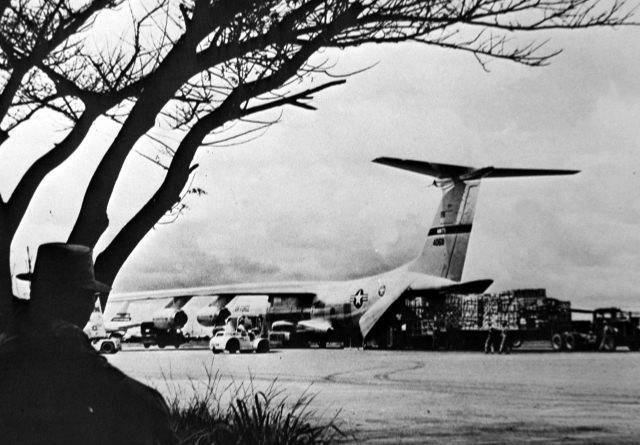
Dick Pulver, President of Lockheed-Georgia, has taken a personal interest in the commercial version of the StarLifter, designated the Lockheed 200. He feels that the jet-powered air freighter with its big "freight-shaped" interior and aft-end loading offers a revolutionary potential to the commercial cargo business. Mr. Pulver is shown in front of the L-200 which is used to demonstrate the astounding capabilities of the aircraft to prospective users. The makrings on the plane are of his own design.
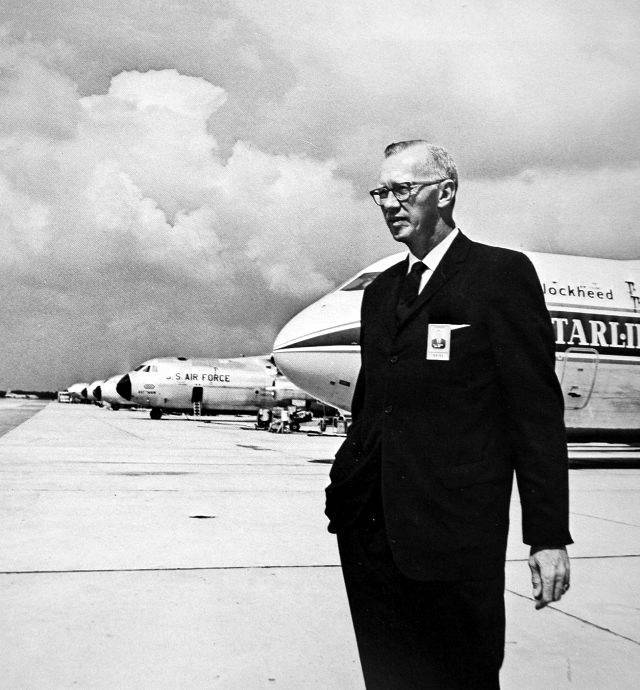
Last Updated: Wed 12-Dec-2014
